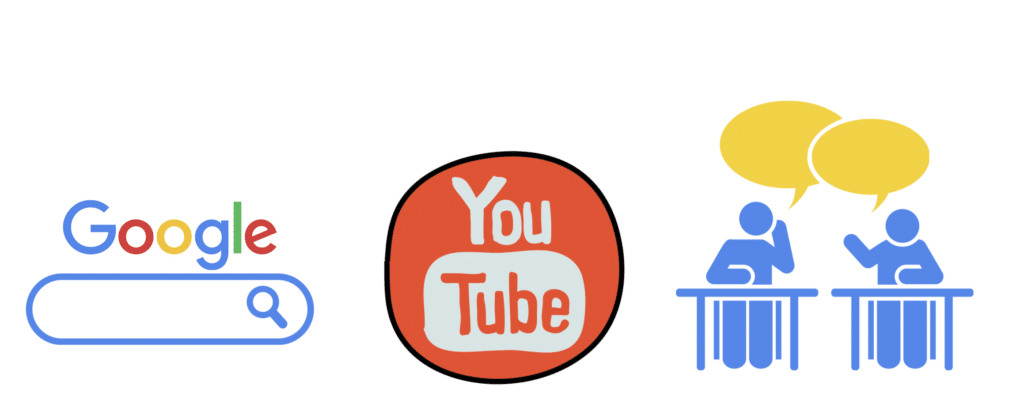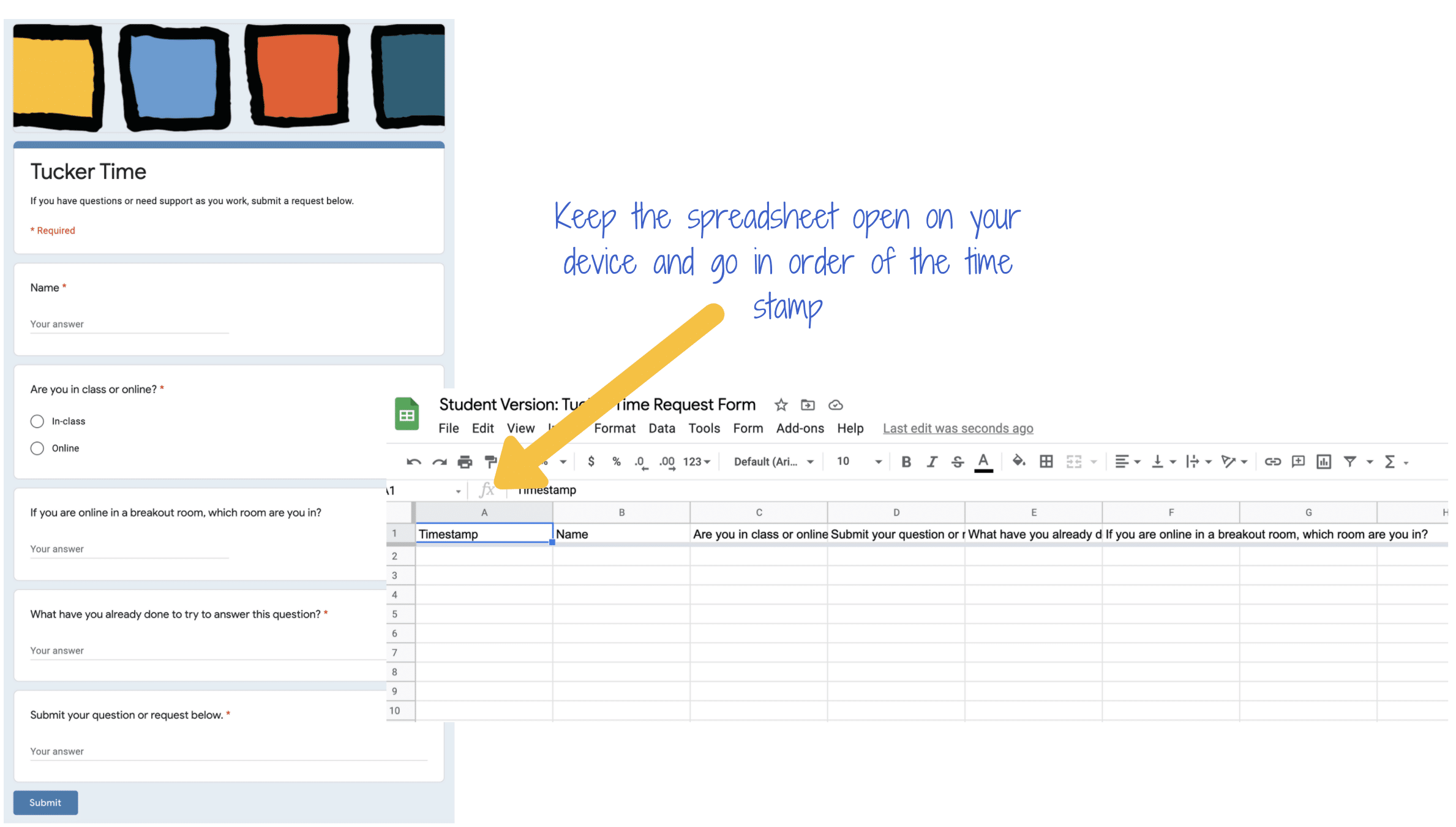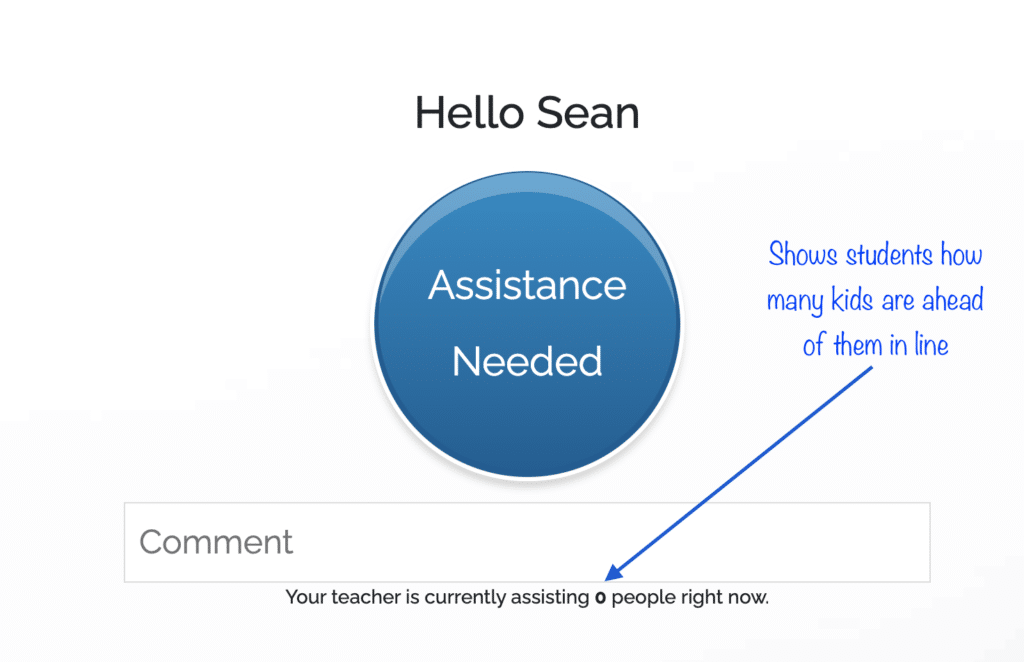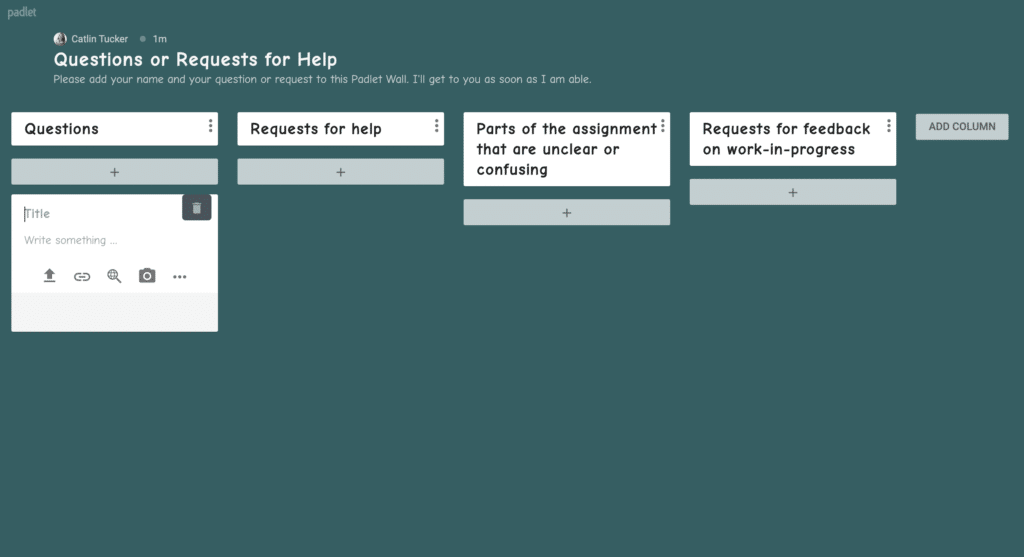One of the challenges teachers in concurrent classrooms face is feeling torn between the needs of students in two learning landscapes simultaneously. Teachers feel guilty because they know one group of students is commanding more of their time and attention. Often, the students in class monopolize the teacher’s time and attention because they can raise a hand or blurt out a question.
As I work with teachers in this challenging teaching assignment, we set up a two-part protocol for questions.
Step 1: Use Your Resources
First, students need to understand that we value their questions, but there are moments in a lesson when we won’t be available to offer an answer or provide support immediately. If we are already working with another student or a small group of students, what can they do to answer their own questions?

- Can they ask Google and do a quick online search?
- Can they search for a YouTube video tutorial?
- Can they ask a classmate?
Students must begin to use their resources online and within the class community to become problem-solvers. Instead of immediately asking the teacher for help when they hit a bump or get stuck, let’s encourage them to try and “figure it out” on their own first. If that doesn’t work, then they can ask the teacher a question.
Step 2: Submit Your Question or Request for Help
If students are unable to answer their own questions, streamline submissions using a single channel. The in-class and online students should have the same access to you in the lesson. That is hard to do if the students in-class can raise a hand or verbally request help. Instead, I encourage teachers to ask all students to submit questions using the same avenue. That makes it possible for teachers to work through the requests equitably.
Google or Microsoft Form
Create a Form for all questions or requests for help. That way, all requests are shuttled to the corresponding spreadsheet, where they are timestamped. The teacher can keep the spreadsheet open on a device and respond to questions or requests for help in the order they are received.

LMS Messaging System
If students are using a learning managements system (LMS), like Canvas or Schoology, to access resources and assignments, teachers may want to use the messaging system inside of their learning management system to streamline questions and requests.
Remind App
Teachers who use the Remind app to send class announcements can ask all students to submit questions and requests via Remind. Those requests appear in order, and the teacher can record a short audio explanation for the student, which may save time responding to students. It also provides a more personalized way to provide support for our online students instead of a text-based response. Another advantage of using Remind is that it lights up a phone with a notification, like a text message, so teachers moving around the room can carry their phones instead of feeling tethered to a laptop.
ClassroomQ
ClassroomQ makes it possible for students to add their names and requests to a virtual queue. The student can request assistance and see how many other students are ahead of them in line.

Padlet Wall
Teachers already using Padlet can create a wall for questions and requests. Using the “shelf” format can help students organize and group their questions and requests, making it easier to identify trends or overlapping needs. If a few students have the same question or need help with the same thing, the teacher can group them and support them all at one time. Another advantage to using Padlet is that teachers can turn on the “comment” feature and encourage students to help one another if they know the answer to a question or are able to provide peer support.

Questions are an important part of the learning process, but they can also create an inequality of teacher attention in the concurrent classroom. It is important to have clear lines of communication open when juggling kids in class and online simultaneously to make responding to student needs in both learning landscapes more manageable. The key is to communicate why you are asking all students to use a particular method to ask questions and be consistent in reinforcing that norm or expectation.
Although I framed this blog using the concurrent classroom as the context, these protocols are universally useful. So, regardless of whether we are in class, online, or a blend of the two, teachers should encourage students to be problem-solvers who lean on their resources. It’s also helpful to streamline requests and questions to avoid a situation where a single student monopolizes our time, and others do not get the support they need.



3 Responses
Thanks for including ClassroomQ!
You’re welcome, Kyle! I really love the functionality!
Take care.
Catlin
I suggested to our faculty to create a buddy system for questions. Have each remote student partner with an in-person student. The in-person students have a chat app open with their remote partners. If a remote student has a question, they can text their partner who can ask the question.